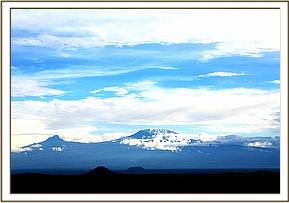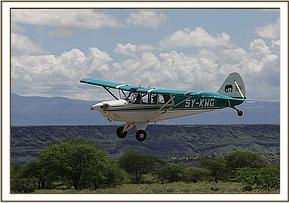During this past week one of the DSWT aircraft (our Cessna 185) has been busy assisting KWS in the wet-season aerial game count of the Amboseli ecosystem
During this past week one of the DSWT aircraft (our Cessna 185) has been busy assisting KWS in the wet-season aerial game count of the Amboseli ecosystem.


The first day was one of training and familiarization. In an effort to continually improve that accuracy of the aerial counts each aircraft was fitted with streamers which were calibrated individually for each observer. In my case two ropes were attached on each strut, which in flight at a level 90m give a 500m and 250m distance from the aircraft. After a long session of fitting the steamers, and a test flight, we were ready to go.
On Tuesday morning we set off, all planes heading to their respective blocks which averaged 900km sq. As this was a cross-border count, we only had clearance to enter Tanzanian airspace on this day, so the focus was to cover the Tanzanian blocks first.
Our block consisted of mountainous ground. Flying north-south transects we covered the block in one flight of 6hrs. The counters in the back of the plane were busy focused on spotting passing animals, while the front seat passenger wrote down all sightings. In the afternoon we finished up another Tanzanian block on the foothills of Mt. Kilimanjaro, with a total time of 8 counting flying hours that day.




The final counting day began even earlier as we headed off to cover 900sq km to the east of Amboseli, and later in the day to an area bordering Tsavo West National Park and the Tanzanian border. Big bull elephants, a herd of over 400 eland, thousands of zebra, and hundreds of giraffe kept the counters busy for nearly 9 hours of counting that day.
The final evening included a de-brief along with Tanzanian pilots and colleagues who had joined us. Over all the new techniques were considered a success as the ground team of computer techs and researchers compiled and analyzed the data. A full report will be released by the end of June 2013. The DSWT would like to take this opportunity to commend KWS for their organization of the count and the professionalism in which it was conducted. We look forward to seeing the full report and the results of all data collected by the seven aircraft involved.
Nick Trent - DSWT pilot - April 27 2013